Do you know the difference between a 21-degree framing nailer and a 30-degree framing nailer? If not, you’re not alone! Many people don’t know the difference, but it’s an important distinction to make when you’re shopping for this type of tool.
Here’s a quick rundown of the difference between these two types of framing nailers [1]:
- 21-degree framing nailers are designed for use with thinner materials, such as wood paneling or trim. They can also be used for light-duty tasks, such as attaching furring strips to studs;
- 30-degree framing nailers, on the other hand, are designed for use with thicker materials, such as lumber. They’re also better suited for heavy-duty tasks, such as attaching plywood sheathing to studs;
So, which type of framing nailer is right for you? Below our experts will discuss the differences between these two types of framing nailers and help you decide which one is right for you.
Why Do Nail Guns Have Different Angles?
To discover this information, you must first understand the framing nailer angle. It refers to the alignment of nails. The frame nailer angle is measured in degrees. It implies at what angle a framing nailer can successfully fire nails.
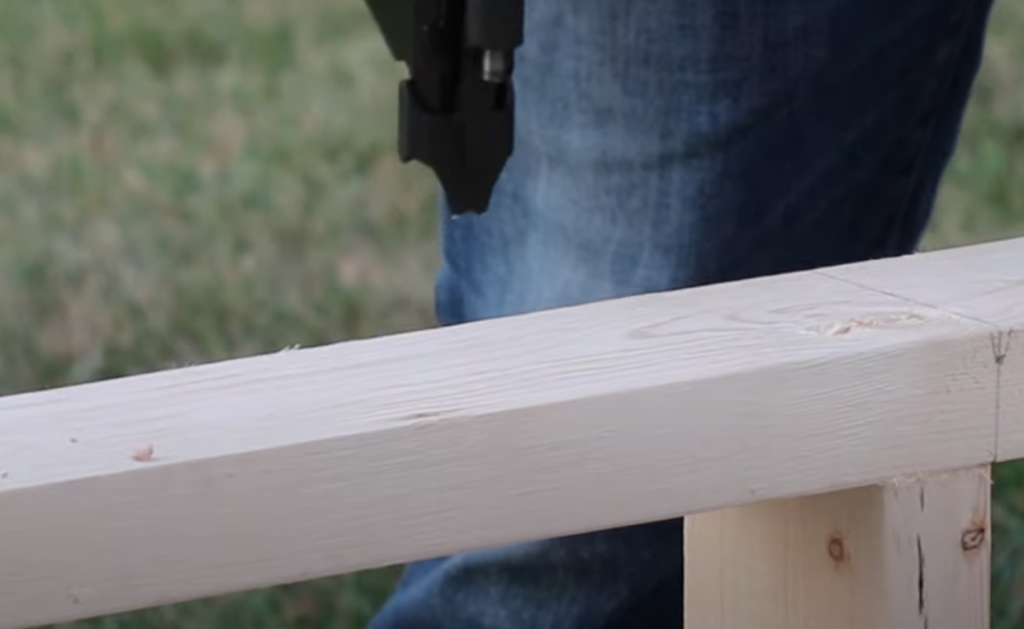
For example, if you have a 30-degree framing nipper, you may create a serviceable 30-degree angle with it.
A typical framing nailer’s magazine is filled with nail strips hanging at an angle, as though the magazine were empty.
A framed nailer’s angle is quite large, making access to the tiniest corner more accessible. Framing nail guns come in a variety of angles for various sorts of jobs. There are also straight-nailing guns available [2].
Before you decide on which degree of a nail gun to purchase, be sure to check with authorities in the region about building codes and regulations. Because local building codes are different, this is the case. This implies that if you plan to use a nail gun, you’ll need to comply with specific requirements surrounding the type of head or collation used.
The above is true for buildings in hurricane zones that require a full-round head nail for maximum holding power. To ensure that the type of nail and nail gun being used meets the requirements, you’ll need to check with your local building regulations.
Of course, only the correct size nail can fit into the nail gun. While many companies advocate their own type of nails, it’s possible to utilize nails from other manufacturers if they’re appropriate for the size and collation. It also helps if you can discover a fastener that is suitable for the nail gun. If you’re having trouble finding one, consider choosing another sort if there are more supplies available.
About 21-Degree Framing Nailer
Packaging
Plastic strips with fewer nails than what you would find on bigger capacity nailers are used to support 21-degree framing nails. The best use of a 21-degree framing nailer is for those little gaps, such as corners, since it has only 60 to 70 nails per strip.
The negative aspect of the packaging is that as each nail is driven into the wood, a piece of plastic is ejected. This isn’t only a safety hazard but also makes a mess on your work area. When using a 21-degree framing nailer, it’s always advisable to wear eye protection [3].
Where To Use?
A 21-degree framing nailer is a versatile tool that can be used for a variety of tasks, including:
- Attaching furring strips;
- Installing wood molding;
- Hanging drywall;
- Securing roofing felt;
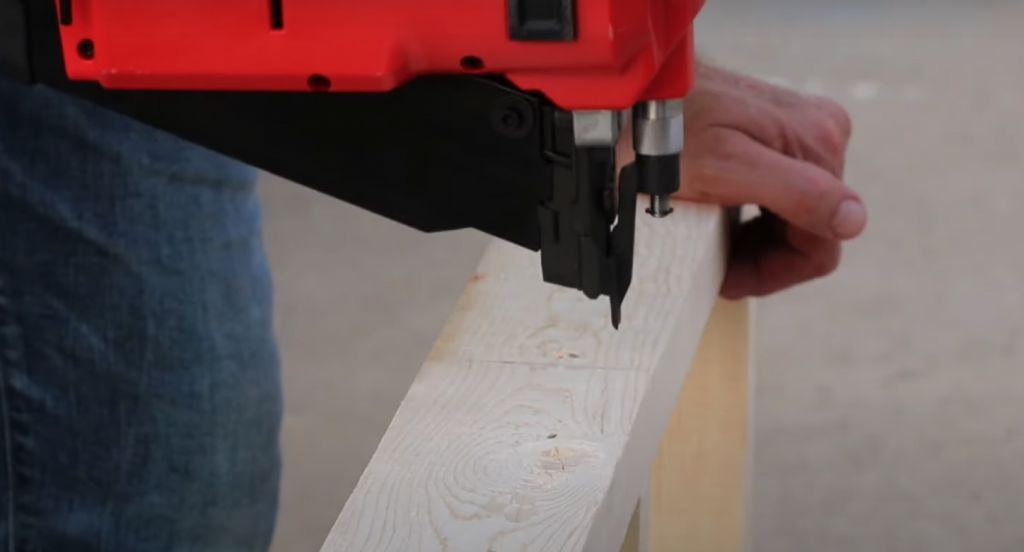
The smaller size and limited capacity of the 21-degree framing nailer make it ideal for these applications. However, it’s important to note that this tool is not meant for heavy-duty projects.
How To Load?
Align the plastic strip with the magazine’s guides in your framing nailer. Slowly insert the nail strip into the magazine.
You risk a misfire or jam in your nail gun if the nails get bent.How To Use?
Once the nail strip is inserted, cock the gun by pulling back on the loading handle. This will load a nail into the firing chamber. To fire a nail, simply squeeze the trigger. The 21-degree framing nailer can be used with one hand or two.
21-degree framing nailers are versatile tools that can be used for a variety of tasks, including attaching furring strips and installing wood molding. The smaller size and limited capacity of the 21-degree framing nailer make it ideal for these applications. However, it’s important to note that this tool is not meant for heavy-duty projects [4].
About 30-Degree Nailer
Packaging
The nail gun contains two pieces of paper strips of 88 framing nails, which is twice the capacity of a 21-degree framing nailer. The benefit of these nailers is that the paper strips are easier to store and aren’t as dirty as the plastic ones. The disadvantage is that any moisture in the air harms the paper strips.
Where To Use?
For framing projects, a 21-degree framing nailer is adequate.
How To Load?
The loading process of a 21-degree framing nailer is different from that of a 30-degree one. For the latter, you need to put the nails in at an angle and then push down the handle to load them.

As for the former, you can just push the nails in without any particular orientation.
How To Use?
Using a 30-degree framing nailer is easier as you don’t need to put much pressure on it. Just hold it close to the surface and squeeze the trigger. On the other hand, using a 21-degree framing nailer requires more pressure as you have to push down on the handle while squeezing the trigger.
If you’re working with thicker lumber or doing any type of roofing, then you’ll definitely want to go with a 30-degree framing nailer. The added power will make your job much easier and help you avoid any potential issues that could come up from using a 21-degree nailer.
Place the nose of the nailer against the wood where you want to put a nail. Hold the nail gun firmly on both ends and gently squeeze the trigger [6].
Framing Nailer – 21 Vs 30 Degree
Nail Collation
There are two types of collation when it comes to framing nailers: plastic and wire. The main difference is that wire collated nails have a small metal ring connecting each nail, whereas plastic does not.
This means that wire collated nails are less likely to jam in the gun, but they are also more expensive. For this reason, most people opt for plastic-collated nails [7].
Nail Head
There are two types of head when it comes to nails – clipped head and full round head. Clipped head nails have a smaller surface area, which makes them easier to drive into the wood. Full round head nails have a larger surface area, which provides more holding power.
Nail Shank
The shank is the metal part of the nail that goes into the wood. There are two types of shanks – smooth and ring.
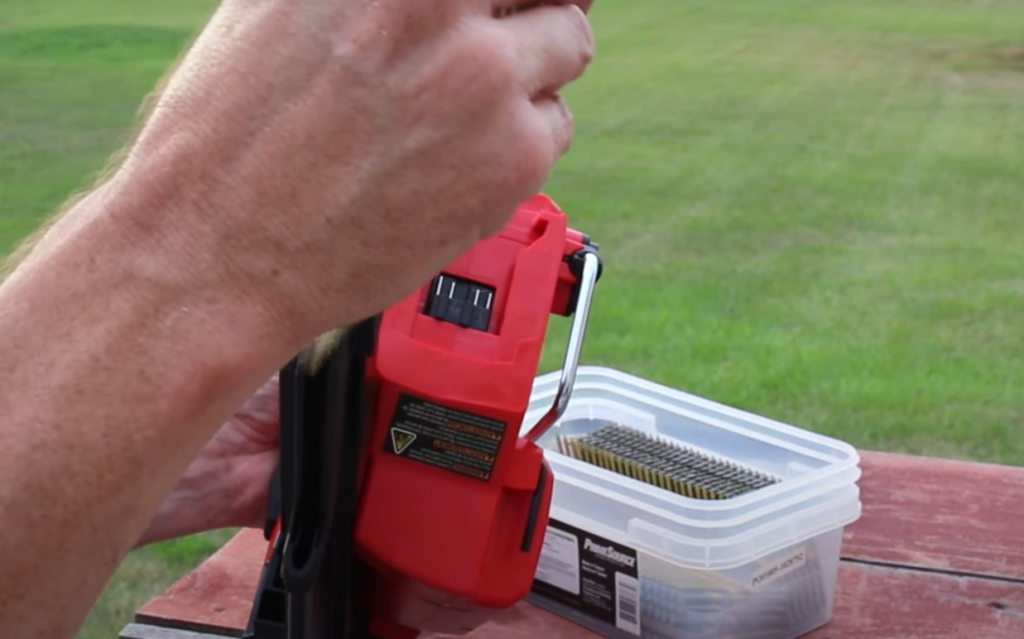
Smooth shanks are less likely to split the wood, but they do not have as much holding power. Ring-shanked nails have more holding power, but they are more likely to split the wood.
Nail Length
The length of the nail is measured from the tip of the nail to the top of the head.
The most common lengths are two inches, three inches, and four inches [8]:
- Two-inch nails are typically used for smaller projects, such as attaching furring strips or honeycomb panels;
- Three-inch nails are typically used for attaching plywood sheathing and subflooring;
- Four-inch nails are typically used for attaching roof decking and floor joists;
When it comes to 21 vs 30-degree framing nailers, the main difference is in the angle of the magazine.
A 21-degree framing nailer has a magazine that is angled at 21 degrees, while a 30-degree framing nailer has a magazine that is angled at 30 degrees.
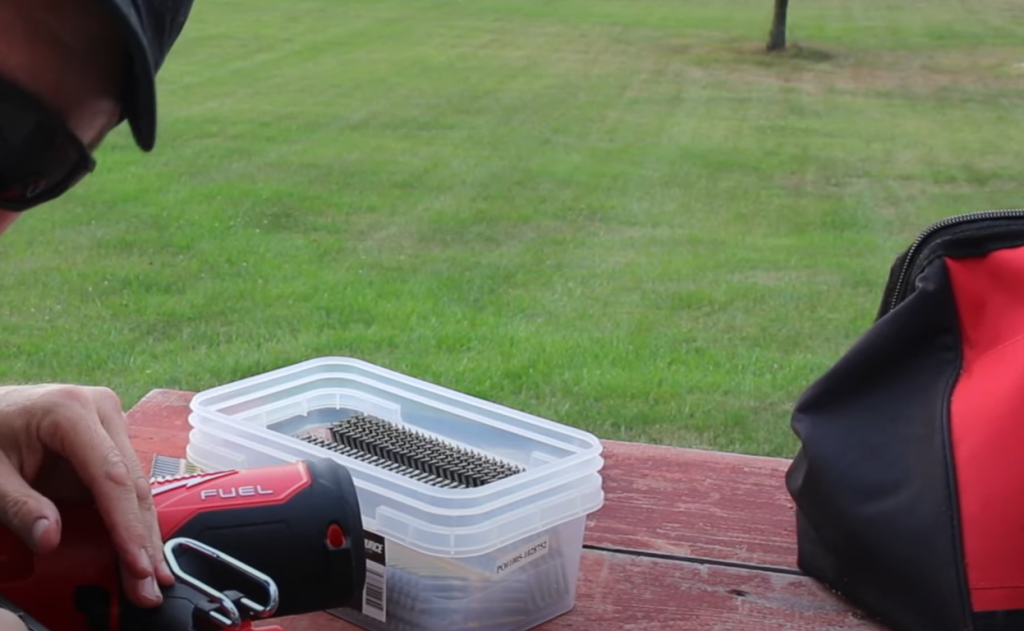
The purpose of this is to provide more clearance when nailing into tight spaces. However, it also means that 21-degree nailers are not compatible with 30-degree nails, and vice versa.
FAQ
What degree is best for framing nailers?
The 30-degree angle is the best, and they allow you to access the tightest angles in framing applications [9]. The 21-degree nailer is better for working with thicker lumber and in applications where you need more power to drive the nails.
The 30-degree framing nailer is going to give you the most versatility when it comes to nailing into tight spaces. If you have a project that requires a lot of precision, then the 30-degree nailer is the way to go. However, if you are working with thicker lumber or need more power to drive the nails, then the 21-degree nailer might be a better option for you. Ultimately, it all comes down to what your specific needs are for the project at hand.
Can I use 21-degree nails in a 30-degree nailer?
Clips for nails vary in length and gauge, as well as material type. The most essential thing to remember is that if you have a 21-degree nailer, you can only utilize 21-degree clips [10].
What size nail gun do I need for framing?
For general framing, a 21-degree pneumatic nailer that uses full round head nails from two to three and a half inches long should suffice. If you’re working exclusively with hardwoods or doing a lot of trim work, then consider getting a finish nailer instead.
If you are looking for a versatile option that can be used for general framing, then the 21-degree pneumatic nailer is a good choice. This type of nailer uses full round head nails from two to three and a half inches long.
However, if you are working exclusively with hardwoods or doing a lot of trim work, then you might want to consider getting a finish nailer instead. Ultimately, it all comes down to what your specific needs are for the project at hand.
What size nails should I use for framing?
The majority of contractors agree that you should use 16d nails, often known as 16-penny nails. These are the ideal length at 3 5/8 inches. Common nails and sinker nails are the two types of these 16-penny nails [11].
Which is better – plastic or paper-collated nails?
Plastic-collated nails are less likely to jam in the nail gun, but they’re also more expensive. Paper-collated nails are cheaper, but they tend to jam more often.
When it comes to plastic-collated nails vs. paper-collated nails, it really depends on your needs and budget. Plastic-collated nails are less likely to jam in the nail gun, but they’re also more expensive.
Paper-collated nails are cheaper, but they tend to jam more often. Ultimately, it all comes down to what your specific needs are for the project at hand.
How many CFM do I need for a framing nailer?
Framing nailers need a higher CFM rating than other nailers on our list. They usually require roughly 2.5 cubic feet per minute at 90 psi.
This implies you’ll be fine with a compressor that can pump out 4.0 cubic feet per minute at 90 PSI. A 6- to 8-gallon tank will suffice for a framing nailer [12].
Are 3-inch nails good for framing?
It’s important not to skimp when it comes to the framing of your fence. Using 16d framing nails, whether you choose one method or the other, guarantees a strong structure that satisfies local building codes.
A 4-inch, 20d nail is preferable for 2×6 timber but may cause smaller 2×4 timbers to fracture.
Use a 3-inch, 10d nail in 2×4 framing and you won’t have less strength or be structurally inadequate.
What does the “D” mean in nails?
Nails are sometimes sold as a number followed by d and (less confusingly) by length for historical reasons. The “D” in 8d refers to an 8-penny nail, 16d to a 16-penny nail, and so on. It’s a way of indicating the length of nails [13].
Can you use paper-collated nails instead of wire?
All paper collated nails, all plastic collated nails, and all wire collated nails will fit the same equipment except for a few exceptions [14].
So there you have it – a 21 vs. 30-degree framing nailer comparison. As you can see, there are pros and cons to both types of nailers. Ultimately, it all comes down to what your specific needs are for the project at hand.
Can you use 16-gauge nails for framing?
A finish nailer, on the other hand, is a 16ga nail gun that isn’t designed to join 2x4s. The finish nailer’s nails are much thinner, allowing them to be driven into trim and molding without splitting the wood [15].
No, you can’t use 16-gauge nails for framing. A finish nailer, on the other hand, is a 16ga nail gun that isn’t designed to join two-by-fours together. The finish nailer’s nails are much thinner, allowing them to be driven into trim and molding without splitting the wood. Ultimately, it all comes down to what your specific needs are for the project at hand.
Useful Video: Milwaukee 21 degree vs 30 degree nailer IBC 2018 Code has the 21 degree nailer as the WINNER
References:
- https://upgradedhome.com/21-vs-30-degree-framing-nailer/
- https://thetoolstrunk.com/21-vs-30-degree-framing-nailer/
- https://upgradedhome.com/21-vs-30-degree-framing-nailer/
- https://www.finepowertools.com/nailers/framing-nailer-21-vs-30/
- https://thetoolstrunk.com/21-vs-30-degree-framing-nailer/
- https://www.nailgundepot.com/blog/why-framing-nail-guns-have-different-angles.html
- https://toolsprokit.com/which-is-better-21-degree-or-30-degree-framing-nailer/
- https://www.finepowertools.com/nailers/framing-nailer-21-vs-30/
- https://www.nailgundepot.com/blog/why-framing-nail-guns-have-different-angles.html
- https://www.hgtv.com/design/remodel/interior-remodel/what-size-nails-framing-gun
- https://www.h2ouse.org/what-size-nails-should-you-use-for-framing/
- https://allaboutaircompressors.com/what-size-air-compressor-do-you-need-for-nail-guns-with-chart/
- https://www.familyhandyman.com/project/the-letter-d-in-nail-sizes/
- https://ezfit.com/all-about-framing-nails
- https://diy.stackexchange.com/questions/169649/can-i-use-a-16-gauge-nail-gun-for-framing-lumber
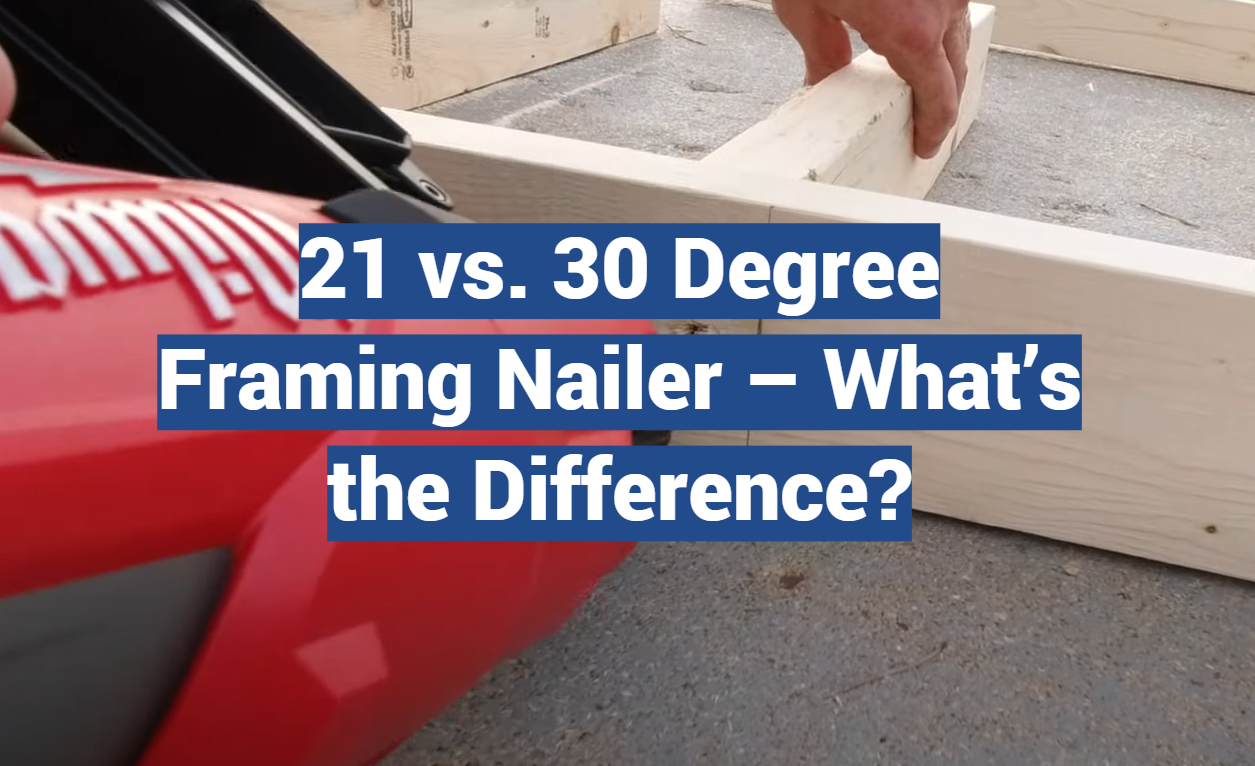
Leave a Reply